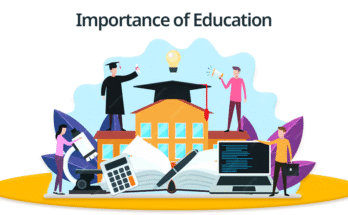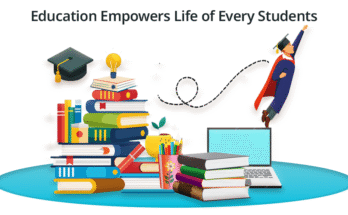In the modern world, learning does not only happen in classrooms. With the help of the internet, students can now study from anywhere. This is called online learning or e-learning. It has changed the way we gain knowledge.
Online learning has many benefits, but it also has some limitations. In this blog, we will explore both the good and the not-so-good sides of online learning.
What Is Online Learning?
Online learning means getting an education using the internet. It can happen through:
- Video classes (like Zoom or Google Meet)
- Educational websites and apps
- Online courses on platforms like Coursera, Udemy, or Khan Academy
- School portals where students do homework, take tests, and chat with teachers
It is also called virtual learning or distance education.
Benefits of Online Learning
Online learning is becoming more popular for many reasons. Here are some of the biggest benefits:
1. Learn from Anywhere
Students can join a class from their home, a library, or even while traveling. They do not need to go to a school or college. This helps people who live far from schools.
2. Flexible Time
In many online courses, students can choose when to study. This is called self-paced learning. It helps students who work part-time or have other duties.
3. Saves Time and Money
Online learning saves money on:
- Travel
- Food
- Books (many materials are online for free)
- Hostel or housing costs
It also saves time because students don’t need to travel to class.
4. Access to Global Education
You can learn from top teachers around the world. Students in India can take a class from Harvard or Oxford. This gives more learning chances.
5. Wide Choice of Courses
There are thousands of courses online—from math and science to art, business, and even cooking. You can learn new skills or improve old ones.
6. Use of Technology
Online learning uses videos, animations, quizzes, and apps to make learning fun. These tools help students understand better and stay interested.
7. Helps Shy Students
Some students are shy in class. In online learning, they can ask questions in chat or write emails. This helps them take part without fear.
Limitations of Online Learning
Even though online learning is helpful, it also has some problems. Here are the main limitations:
1. Lack of Face-to-Face Interaction
Students miss talking to teachers and classmates in person. This can make learning feel lonely. It may also be harder to ask questions or get help.
2. Requires Internet and Devices
Not every student has a good computer or internet. This is a big problem in poor or rural areas. It causes a digital divide between rich and poor.
3. Less Hands-On Practice
Some subjects like science, engineering, or art need lab work or practical sessions. It is hard to do these things online.
4. Easy to Get Distracted
At home, students may get distracted by TV, phones, or family noise. Without discipline, they may lose focus and not complete the course.
5. Health Issues
Spending too much time on screens can cause:
- Eye strain
- Headaches
- Poor posture
- Lack of exercise
It can also affect sleep and mental health.
6. Cheating in Tests
Online exams are easier to cheat in. It’s hard for teachers to watch students during online tests. This can make exams less fair.
7. Not All Courses Are Equal
Some online courses are not made well. They may have old content or bad teaching methods. Students may not get the quality education they expect.
When Is Online Learning Most Useful?
Online learning is best for:
- People who work or have family duties
- Students who live far from schools
- Learning new skills like coding, writing, or languages
- Short-term or certificate courses
When Is Traditional Learning Better?
Classroom learning is better for:
- Young children who need more attention
- Subjects that need labs or teamwork
- Students who learn better through hands-on practice
- Social interaction and building soft skills
Blended Learning: The Best of Both Worlds
Many schools and colleges now use blended learning. This means mixing online and in-person classes. For example:
- Watch video lessons at home
- Do homework online
- Come to school for tests or lab work
This method gives the flexibility of online learning and the support of classroom teaching.
Tips to Succeed in Online Learning
If you want to do well in online learning, follow these tips:
1. Set a Study Schedule
Pick a time each day for studying. Follow your routine like school or college. This keeps you on track.
2. Find a Quiet Study Space
Choose a place where you can focus. Avoid noise and distractions. Tell your family not to disturb you during study time.
3. Take Notes
Just like in class, take notes during video lessons. This helps you remember better and prepare for exams.
4. Ask Questions
Don’t be shy. Use chat, email, or discussion boards to ask your teacher if you don’t understand something.
5. Take Breaks
Rest your eyes every 30–40 minutes. Get up, walk, stretch. This helps you stay fresh and healthy.
6. Stay Motivated
Set small goals. Reward yourself when you finish them. Talk to classmates online to stay connected.
Future of Online Learning
Online learning will continue to grow. New technologies like AI, Virtual Reality (VR), and Augmented Reality (AR) will make online classes even better.
Imagine learning history by walking through a virtual museum or doing science experiments in a 3D lab. This is the future of education.
Conclusion
Online learning is changing the way people study. It offers many benefits like flexibility, lower cost, and wide access. But it also has limits, such as lack of interaction and technical issues.
The best way forward is to use a mix of both online and classroom learning. When used the right way, online education can open the door to knowledge for everyone, no matter where they are.
SEO Keywords to Use:
- Online learning benefits
- Online learning disadvantages
- Advantages of virtual learning
- E-learning pros and cons
- What is online education
- Future of online learning
- Online vs traditional learning



